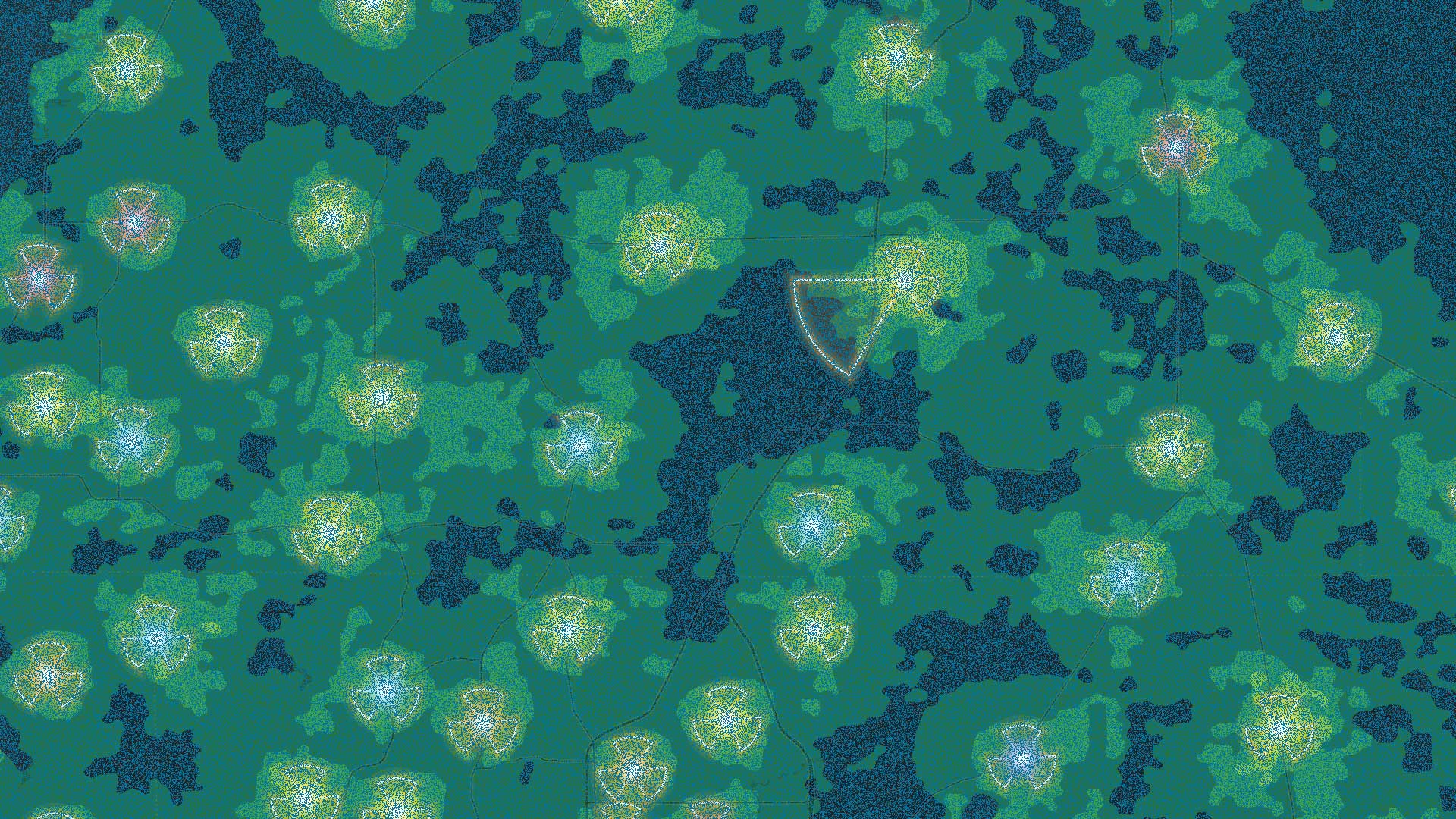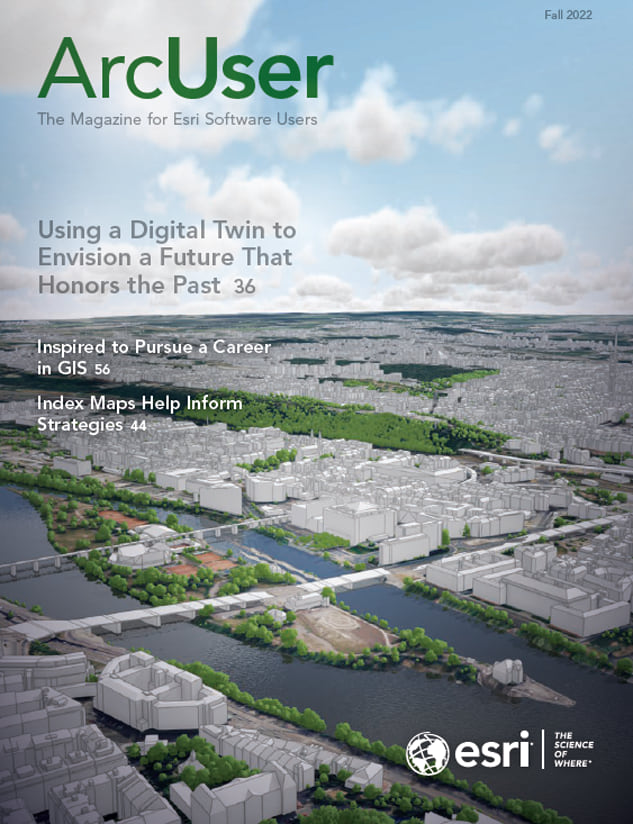Charitable giving and volunteering have always seemed personal to me. My support of nonprofits probably started in grade school. The nuns made us give our change to poor children in faraway lands, pick up trash on the side of the road, or volunteer at school. Later, I gave to United Way through payroll deductions and donated blood to LifeStream. Frankly, these were easy ways of giving.
As I grew older, my causes became more personal: dropping off a bag of food and supplies for a homeless person or paying for a disabled youth’s summer camp that uses horses as therapy. When a friend’s son came down with arterial tortuosity syndrome (ATS), I supported research on this rare disease. I responded to needs that tugged at my heart.
My career in government and GIS shifted my thinking and I began seeing how I could promote charitable works by supporting nonprofits. One of the first ways I applied GIS was helping organizations fill out their Community Development Block Grant (CDBG) requests. The CDBG program led to me adopting the public library and providing access to maps and data via a rudimentary app so that nonprofits could find their census tracks to obtain data and maps about low- and moderate-income populations. I began to see how nonprofits could use GIS to help them apply for grants and communicate their missions.
This spring I had an eye-opening experience. I watched two of my Esri co-workers, Pat Dolan and Amanda Stanko, rally several small nonprofits to raise awareness of those affected by amyotrophic lateral sclerosis (ALS). Pat is living with ALS. He and Amanda used GIS to help ALS nonprofits secure funding from Congress for the first time. Their efforts were inspirational and a model for how GIS professionals and nonprofits can work together. [See the article “Using GIS to Effect Change for the ALS Community” in the fall 2021 issue of ArcUser.]
Adopt a Nonprofit: It Will Do Your Heart Some Good
The world needs more people like Pat and Amanda. This is an open call to you, a GIS professional—or a professional who uses GIS—to adopt a local nonprofit. Pick a cause that tugs at your heartstrings and tell the people at that nonprofit about the power of GIS. More specifically, pick a smaller nonprofit. Pick one that works at the state, region, county, or city level. Did you know that small nonprofits—those with 25 employees or fewer—make up the bulk of the 1.6 million organizations that help augment or supplement government services?
Introduce the people at that nonprofit to the advantages of spatial thinking and GIS. You can assure the leaders and volunteers that thousands of nonprofits already use GIS to advance their efforts. The wide range of organizations that use spatial technology include the following:
- Donate Life California uses maps to help communicate its causes and educate potential organ donors.
- San Jose Mothers’ Milk Bank uses ArcGIS Business Analyst to reach women who might like to donate breast milk.
- The Surfrider Foundation volunteers use ArcGIS Survey123 and ArcGIS QuickCapture in their beach cleanup activities.
Make a Difference
Esri has made adopting a nonprofit easier with the Esri Small Nonprofit Organization Grant Initiative, which will waive the first year’s fees and provide data, software, and resources to nonprofits. GIS is a tool that helps nonprofits become more data-driven organizations, identify opportunities to connect with donors and volunteers, and communicate their mission and successes more effectively. The initiative’s goal is to assist small nonprofits that would benefit from the value GIS brings to their business functions. A secondary goal is introducing smaller nonprofits to the larger academic, commercial, and government communities.
Esri is asking you, as a GIS professional, to become a GIS ambassador. Your support can come from joint county and nonprofit projects; through extending local data; by providing cross-training on the software; or by keeping an open line of communication with a nonprofit. Even though your passions may focus on a specific nonprofit, Esri hopes you will consider helping all the nonprofits in your community.
As you know, nonprofit organizations are driven by a desire to make a difference. But having a great mission is not enough. Having the tools to collect and analyze data and the storytelling tools to communicate the mission will let nonprofits target the donors and volunteers who will help build strong business operations. You can help nonprofit leaders understand the business value of GIS and direct them to Esri nonprofit community resources.
Those resources will help nonprofits use the geographic approach to identify communities in need, allocate resources, communicate purpose, improve advocacy, and increase the overall effectiveness and efficiency of their organization operations. The organizations that thrive are those that plan, measure, and manage their programs and operations through one common language—location.
Who Is Eligible?
The Esri Small Nonprofit Organization Grant Initiative assists small nonprofit organizations that are new to using GIS technology. Esri is investing $1 million in a grant initiative that will provide software and training to 150 nonprofit organizations that meet the requirements of a 501(c)(3) public charity and have 25 or fewer employees who are not currently using Esri’s ArcGIS software. Esri has designed a special grant package that includes software, data, and training for up to five people in an organization.
Apply Now
The grant program was launched on August 17, 2022, National Nonprofit Day. To apply for the Esri Small Nonprofit Organization Grant Initiative, visit esri.com/nonprofitgrant. The application process is simple.
Applicants fill out the short online grant request and justification form. They confirm their 501(c)(3) status via the Esri Nonprofit Organization Program form. This helps make a nonprofit a sustainable member of the Esri nonprofit community.
Once both steps are completed, Esri will confirm a nonprofit’s 501(c)(3) status and then review the grant application. Grant recipients will be announced in two groups on November 17, 2022, and February 28, 2023.


